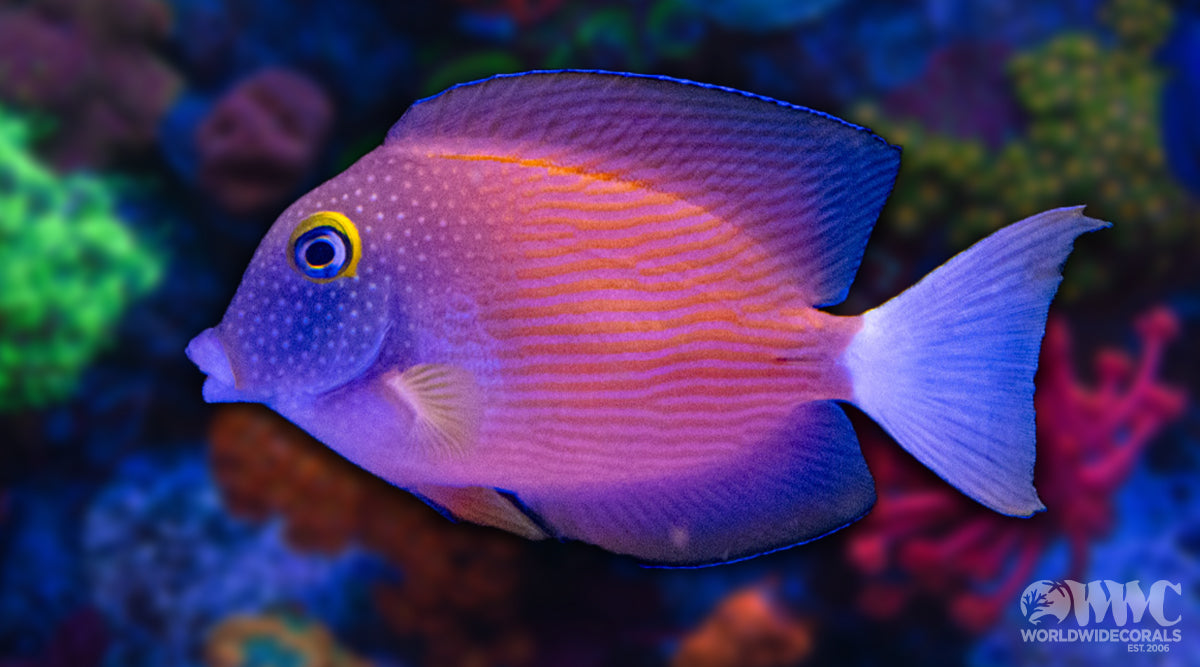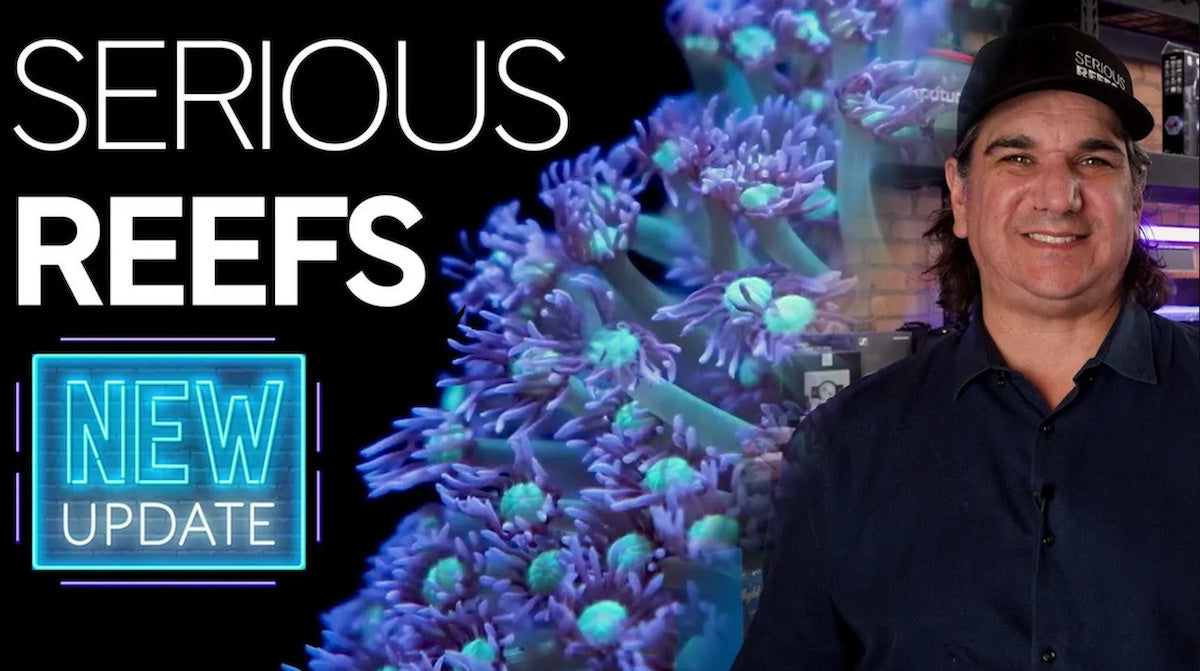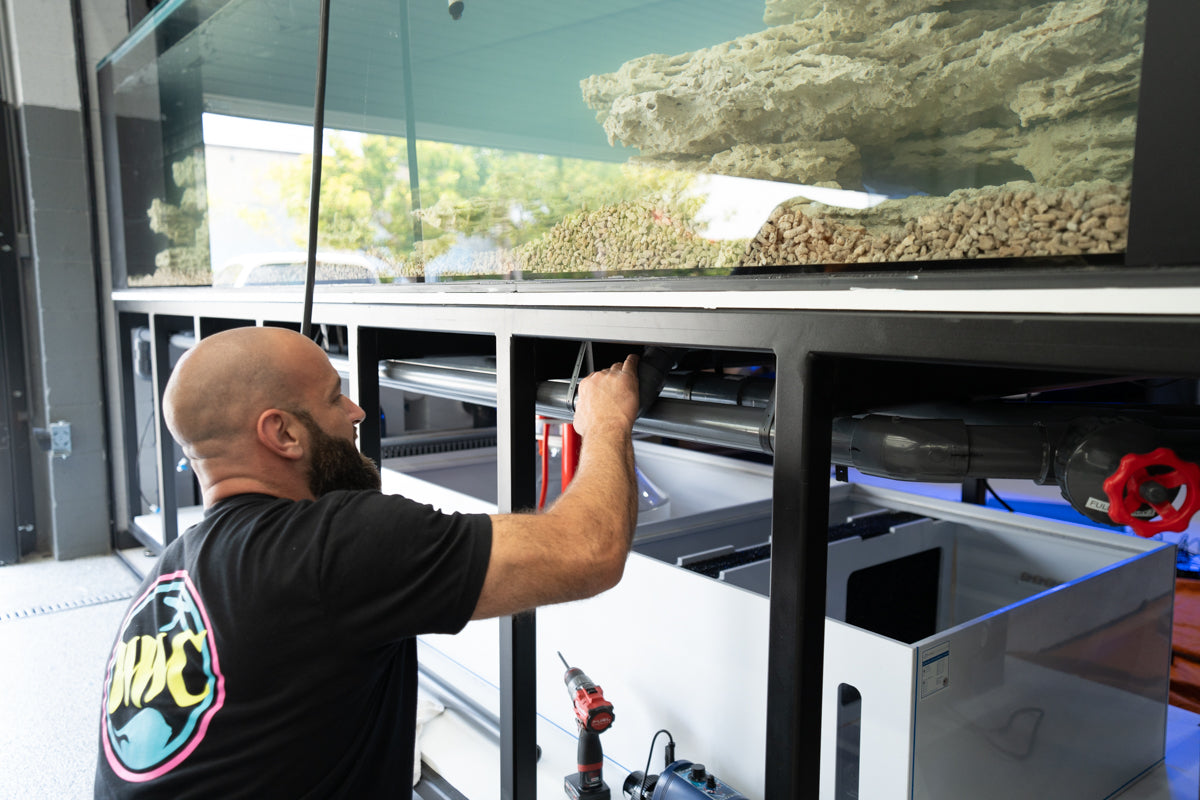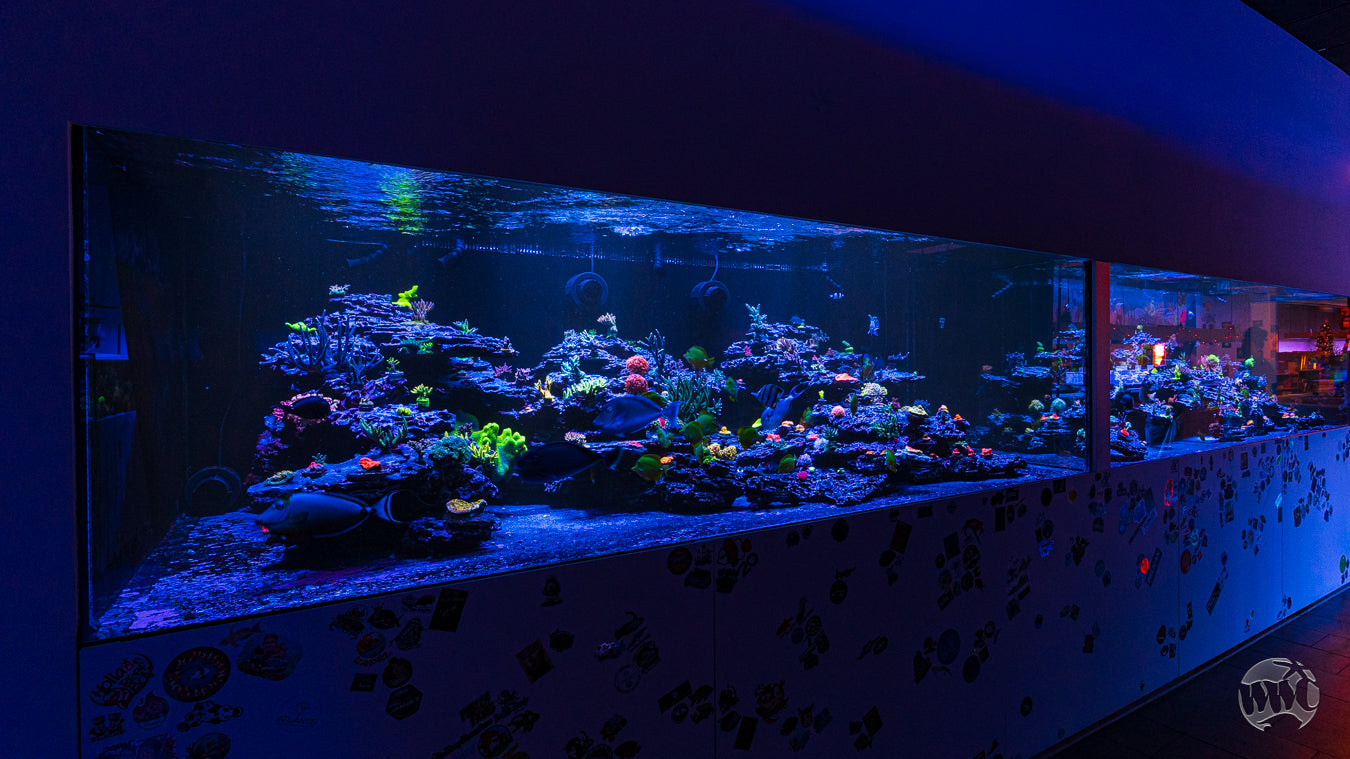White Tail Bristletooth Tang (Ctenochaetus flavicauda)
The White Tail Bristletooth Tang, (Ctenochaetus flavicauda), is one of the most popular fish for marine aquariums. White Tail Bristletooth Tang has a distinctive red body with orange spots and a prominent white tail. This species belongs to the tang or surgeonfish family, and has a scalpel-like spine located at the base of their tail.
White Tail Bristletooth Tang Compatability

The White Tail Bristletooth Tang thrives in clear, shallow waters up to 30 meters deep. In the wild, adult individuals typically lead solitary lives, a behavior that suggests caution when introducing similar-looking species into the aquarium to prevent stress and aggression. Despite their territorial nature towards conspecifics and similar species, tangs generally exhibit peaceful behavior towards a diverse range of tank mates, making them suitable for reef aquariums.
White Tail Bristletooth Tang Habitat
Reaching up to 6 inches in size, the White Tail Bristletooth Tang requires a spacious tank to accommodate its swimming needs, ideally one that is 4 feet in length and holds at least 70 gallons of water. The provision of ample rockwork not only simulates their natural habitat, allowing for grazing on algae, but also offers necessary hiding spots to mitigate stress.
White Tail Bristletooth Tang Diet
Diet plays a crucial role in the health and well-being of the White Tail Bristletooth Tang. A varied diet that includes frozen meaty foods, marine pellets, and algae-based foods is essential for bolstering their immune system. The species' unique bristle-like teeth are specially adapted for scraping food off rocks, emphasizing the importance of including marine-based algae or seaweed in their daily feeding regimen to mimic natural feeding behaviors.

When considering the addition of a White Tail Bristletooth Tang to an aquarium, it's vital to account for their specific care requirements, habitat needs, and dietary preferences to ensure a healthy, thriving environment. By understanding the unique characteristics and natural behaviors of this species, aquarists can successfully integrate these beautiful and fascinating fish into their marine aquariums.




